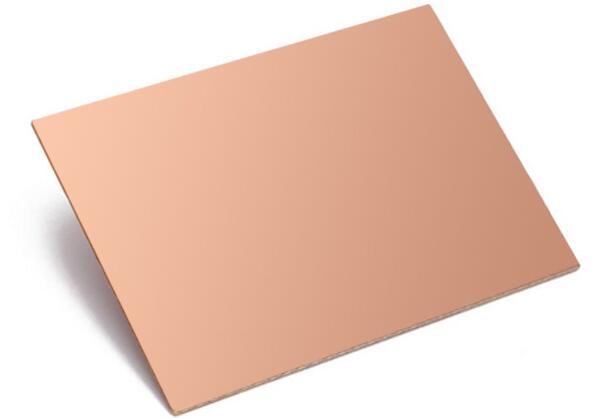Copper clad printed circuit board is a type of PCB characterized by copper-clad laminates. This type of laminated board is a PCB substrate and plays an important role in PCB manufacturing. Copper clad boards are very common in the PCB industry. This is because it provides great functionality. It is an ideal choice for high-frequency applications.

Copper clad printed circuit boards are widely used in the design of copper clad laminates. These laminates, together with some reinforcing materials, are soaked in resin to make copper clad laminates. Copper clad printed circuit boards can be used in computers, televisions, and other electronic devices.
The importance of copper coating lies in improving anti-interference ability and reducing ground wire impedance. The copper coating can also reduce the voltage drop of circuit boards. The characteristic of the copper-clad board is that glass fiber is used as a reinforcing material.
The copper circuit board is lightweight, sturdy and durable. This board has the advantage of electromagnetic shielding. Some industries, including the military, integrate this type of circuit board into their equipment.
The function of copper clad circuit board
1. As a substrate material in the manufacturing of printed circuit boards, copper clad circuit boards mainly play a role in interconnecting, conducting, insulating, and supporting PCBs. They have a significant impact on the transmission speed, energy loss, and characteristic impedance of signals in circuits. Therefore, the performance, quality, processability in manufacturing, manufacturing level, manufacturing cost, and long-term reliability and stability of printed circuit boards largely depend on copper clad circuit boards.
2. The main material of a circuit board is copper clad circuit board, which is a composite material composed of a non-conductive substrate (such as FR4) and one or more layers of copper foil. Copper foil is often covered on one or both sides of a non-conductive substrate for conductive connections. Copper clad circuit boards are mainly used for preparing PCB boards. Copper foil provides a conductive path on the circuit board, where circuits are formed by etching or chemical etching through methods such as equal line spacing and equal line width. PCB boards are used for circuit connections and soldering in electronic devices. They carry electronic components and provide electrical connections between electronic components.
What is PCB copper-clad?
PCB copper coating: The area filled with copper in the PCB layer. This layer can be the top, bottom, or any interior of the PCB stack, and the PCB copper coating can be used for grounding, reference, or isolating specific components or circuits from the remaining elements of that layer.
Copper coating: The area filled with copper in the PCB layer, and copper coating with through holes can be used to help dissipate heat.
Grounding: The internal layer of a circuit board stack, filled with copper, used for signal or power grounding or reference.
Grounding copper coating: the copper coating is used for grounding without occupying the entire layer.
The role of PCB copper coating
1. Grounding on double-layer PCB
Both layers are used for signals and there is no ground plane. For these circuit boards, copper grounding can greatly facilitate efficient wiring by providing a central grounding.
2. EMI shielding
For a good multi-layer design, it is desirable to have a grounding plane between two signal layers to minimize noise. If there is an internal signal layer next to the surface signal layer, grounding with copper can help reduce noise by adding shielding.
3. Heat dissipation
Copper grounding can also be used to absorb heat from high-power components, and excess heat can be removed from the circuit board using heat-dissipation holes.
4. Copper balance
PCB grounding with copper coating can also achieve contract manufacturing (CM) by balancing the amount of copper on both sides of the circuit board during PCB assembly, reducing the possibility of warping during the reflow process. In this case, cross-copper barriers may be a better alternative to solid copper grounding with copper cladding.
5. Large circuit path
Adding surface-grounded copper coating can provide a shorter return path for high-current equipment, such as switch converters, instead of connecting longer wiring to the ground plane.
Copper clad circuit board is the upstream core material for PCB manufacturing. It is a plate-like material made by immersing electronic fiberglass cloth or other reinforcing materials in resin, covering one or both sides with copper foil, and hot pressing. It bears the three major functions of conductivity, insulation, and support for PCBs.